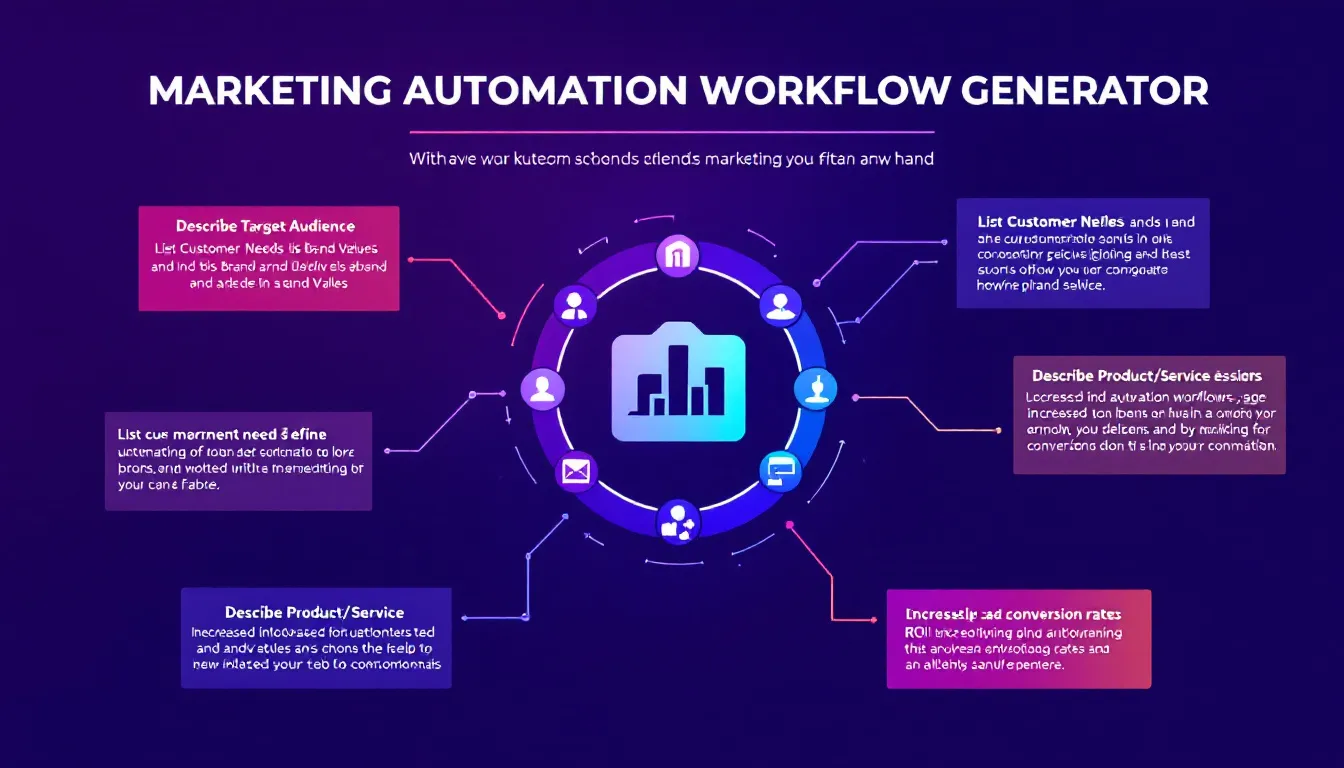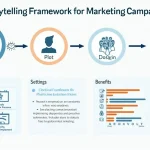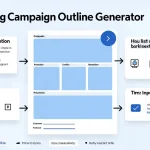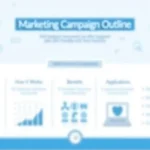Marketing Automation Workflow Generator
Is this tool helpful?
How to Use the Marketing Automation Workflow Generator Effectively
To maximize the benefits of our Marketing Automation Workflow Generator, it’s essential to provide detailed and accurate information in each field. Follow these steps to ensure you get tailored, actionable automation workflows that fit your unique business needs:
-
Describe Your Target Audience: Clearly define who your marketing efforts are aimed at. Include details such as demographics (age, gender, location), interests, behavioral traits, and purchasing habits.
Sample Input:
- Youthful urban parents, ages 28-40, focused on eco-friendly products, frequent online shoppers.
- Senior tech enthusiasts, ages 60+, interested in accessible smart home devices and digital wellness.
-
Identify Customer Needs and Pain Points: List the main challenges your customers face, along with their goals and desires related to your product or service. This ensures the workflow addresses real problems and motivations.
Sample Input:
- Difficulty managing family schedules, desire for organic and sustainable baby products, concern about safety.
- Need for simple setup of smart devices, overcoming tech intimidation, desire for energy savings and home security.
-
Convey Your Brand Values and Unique Selling Points (USPs): Specify what makes your brand distinctive and the principles that guide your company. These help align the marketing message with your brand’s voice.
Sample Input:
- Committed to sustainability, family-first focus, trusted quality, transparency in sourcing.
- User-friendly innovation, customer education, reliability, dedicated support.
-
Describe Your Product or Service in Detail: Highlight key features, benefits, and competitive advantages that will resonate with both customer needs and brand values.
Sample Input:
- A subscription box delivering organic baby care kits tailored to each child’s developmental stage.
- Intuitive smart home hub integrating voice control, energy monitoring, and security alerts.
- Generate Your Customized Marketing Automation Workflow: Once all fields are populated thoughtfully, submit the form to receive a personalized marketing automation strategy. The AI-powered generator synthesizes your input into a sequence of targeted, automated marketing actions designed to optimize customer engagement and conversion.
- Review and Utilize the Generated Workflow: Carefully examine the output to ensure it aligns with your marketing objectives. Use the workflow as a foundational blueprint and adjust it as needed to fit your marketing tools and campaign goals.
Engaging Introduction: Definition, Purpose, and Benefits of Marketing Automation Workflows
Marketing automation workflows are strategic, automated sequences of marketing activities that nurture prospects through the customer journey—from initial awareness to purchase and beyond. Utilizing technology and data-driven insights, these workflows deliver personalized communications at the optimal time, dramatically improving lead nurturing, customer engagement, and conversion rates.
Purpose of Marketing Automation Workflows
- Streamline Lead Nurturing: Automatically guide prospects through tailored messaging relevant to their stage in the buying journey.
- Enhance Customer Experience: Deliver timely, personalized interactions that build trust and loyalty.
- Improve Operational Efficiency: Eliminate repetitive tasks with automation, freeing marketing teams to focus on strategic initiatives.
- Scale Marketing Efforts: Manage complex campaigns for growing audiences without linear increases in resources.
- Enable Data-Driven Refinement: Continuously analyze results to optimize workflows and marketing ROI.
Key Benefits of Using Marketing Automation Workflows
- Increased Conversion Rates: Automated touchpoints deliver the right message to the right audience at the right moment, resulting in higher sales and lead quality.
- Consistent and Cohesive Brand Messaging: Ensuring that all communications reinforce your brand identity, tone, and values across channels.
- Personalized Customer Journeys: Adapt workflows dynamically to individual customer behaviors and preferences for improved engagement.
- Time Savings and Efficiency Gains: Reduce manual workload through automation, accelerating campaign deployment and responsiveness.
- Robust Measurement and Optimization: Leverage workflow analytics to understand customer behaviors and continually enhance marketing strategies.
- Better Lead Qualification and Sales Alignment: Provide sales teams with qualified, nurtured leads ready to convert.
- Scalable Marketing Infrastructure: Seamlessly grow your audience management capabilities as your business expands.
Practical Usage and Real-World Applications of the Marketing Automation Workflow Generator
Our Marketing Automation Workflow Generator is an invaluable resource for marketers, business owners, and agencies aiming to create effective automated campaigns without the complexity and time investment traditionally required. It addresses common challenges related to customer journey mapping, content alignment, and brand consistency by offering a strategic, AI-driven foundation customized to your inputs.
Use Case 1: Online Fitness Coaching Program Enrollment
- Target Audience: Adults aged 20-45 interested in holistic wellness, home workouts, and nutrition guidance.
- Customer Needs: Motivation for regular exercise, personalized coaching, nutrition advice, tracking progress.
- Brand Values: Empathy, scientific approach, community support, accessibility.
- Product: Subscription-based fitness coaching app with live sessions, meal planning, and progress analytics.
Generated Workflow Highlights:
- Welcome email introducing coaching philosophy and app walkthrough.
- Weekly motivational content and workout reminders customized to user goals.
- Monthly webinars covering nutrition and mindset.
- Automated progress check-ins with personalized tips.
- Exclusive offers for long-term subscription upgrades.
Use Case 2: Boutique Travel Agency Lead Engagement
- Target Audience: Affluent travelers aged 35-60 seeking curated, luxurious international experiences.
- Customer Needs: Personalized itineraries, insider access, safety assurance, seamless booking.
- Brand Values: Exclusivity, trustworthiness, exceptional service, cultural authenticity.
- Product: Bespoke travel packages with VIP access, local guides, and 24/7 concierge support.
Generated Workflow Highlights:
- Initial outreach with curated destination guides based on interests.
- Follow-up emails featuring testimonials and personalized travel tips.
- Automated booking reminders and pre-trip preparation checklists.
- Post-trip surveys with incentives for referrals.
- Exclusive offers for repeat clients and VIP events invitations.
Use Case 3: Educational Software Vendor Post-Demo Nurturing
- Target Audience: School administrators and IT coordinators evaluating e-learning platforms.
- Customer Needs: Evidence of efficacy, ease of implementation, cost-effectiveness, robust support.
- Brand Values: Innovation, reliability, customer success, ongoing training.
- Product: Cloud-based e-learning management system with customizable content and analytics.
Generated Workflow Highlights:
- Thank you email with on-demand demo recording and product brochure.
- Drip emails highlighting feature benefits and case studies.
- Invitation to live Q&A sessions and implementation workshops.
- Automated reminders to provide feedback and schedule consultations.
- Upsell sequences for premium modules based on user engagement.
Important Disclaimer
The calculations, results, and content provided by our tools are not guaranteed to be accurate, complete, or reliable. Users are responsible for verifying and interpreting the results. Our content and tools may contain errors, biases, or inconsistencies. We reserve the right to save inputs and outputs from our tools for the purposes of error debugging, bias identification, and performance improvement. External companies providing AI models used in our tools may also save and process data in accordance with their own policies. By using our tools, you consent to this data collection and processing. We reserve the right to limit the usage of our tools based on current usability factors. By using our tools, you acknowledge that you have read, understood, and agreed to this disclaimer. You accept the inherent risks and limitations associated with the use of our tools and services.







